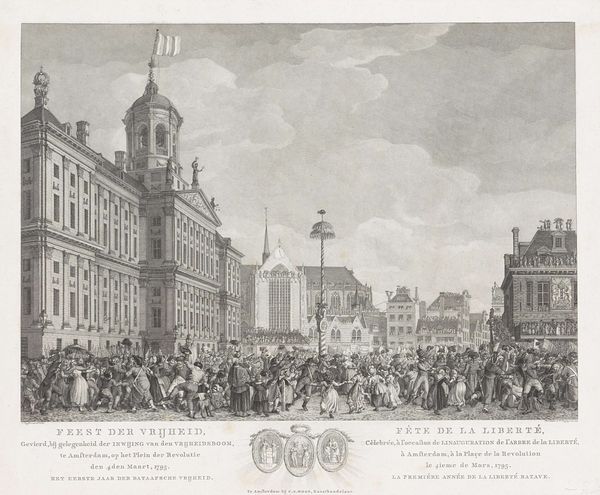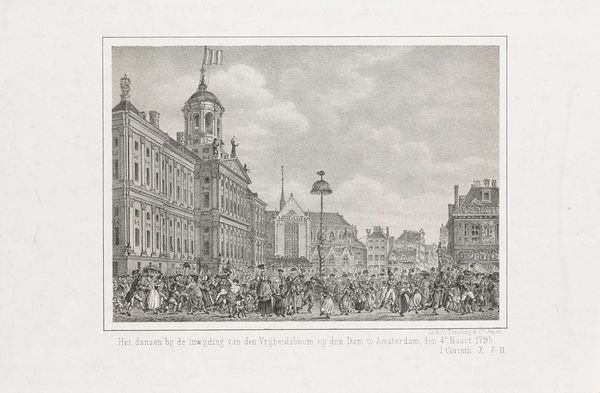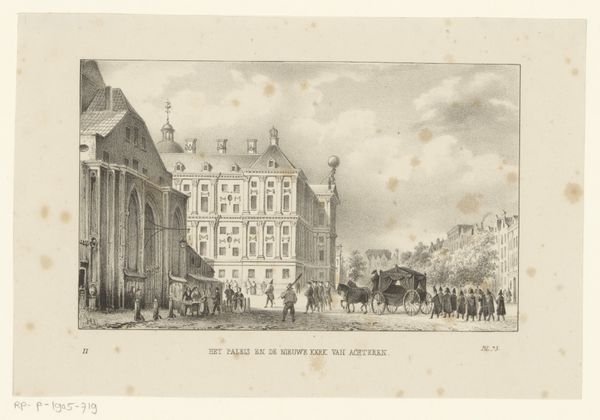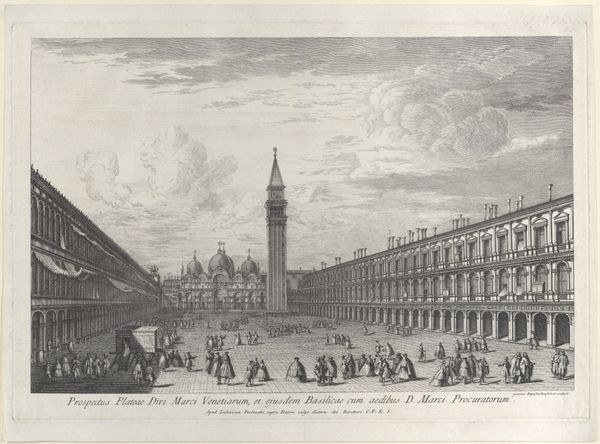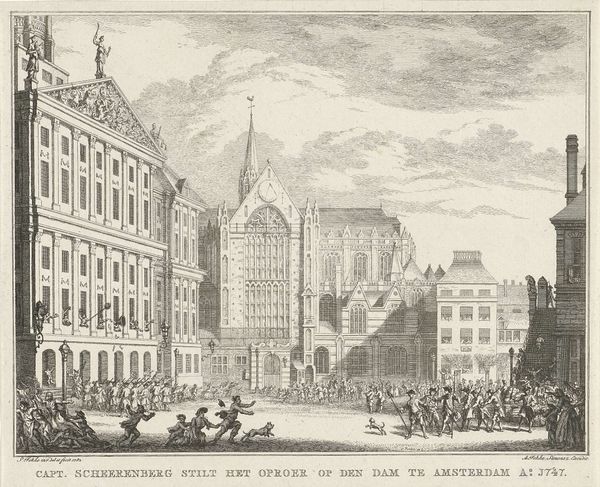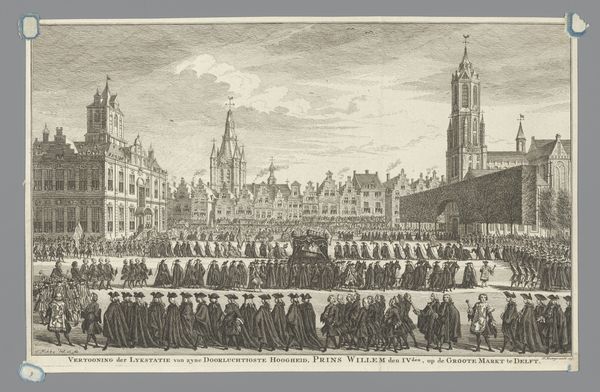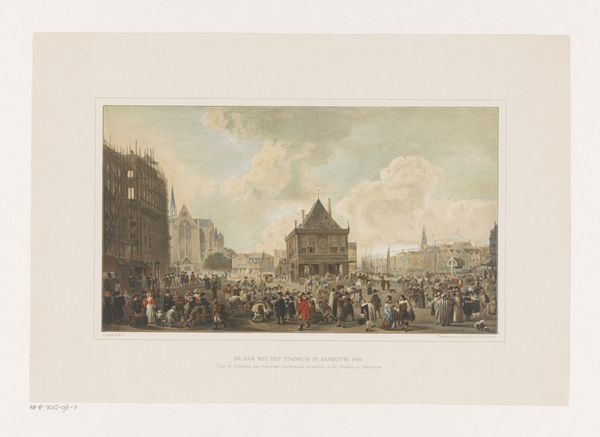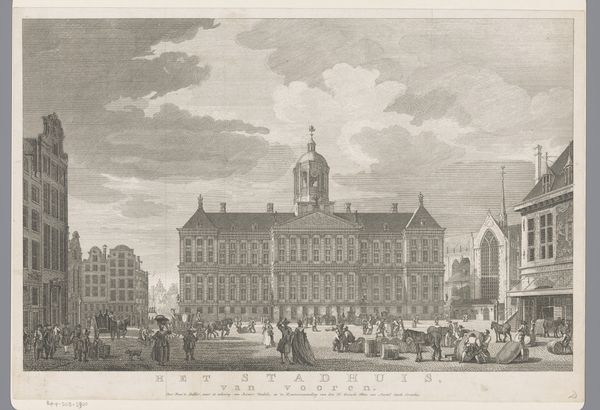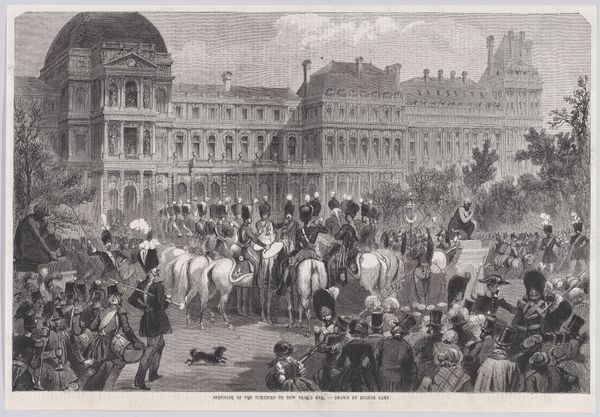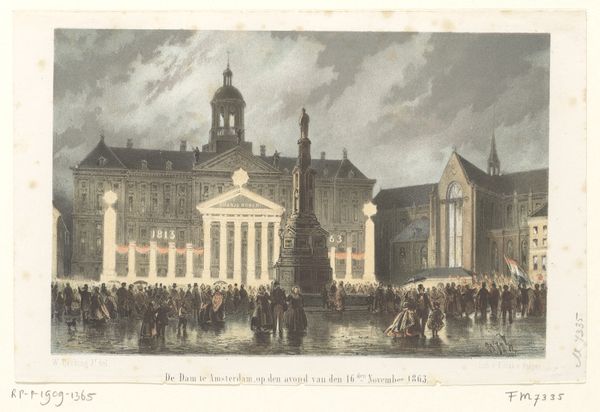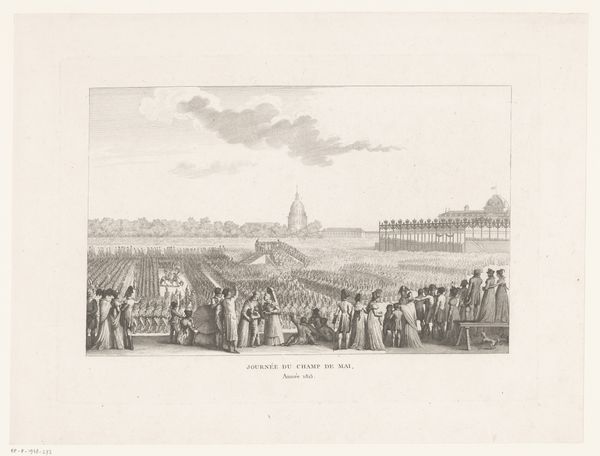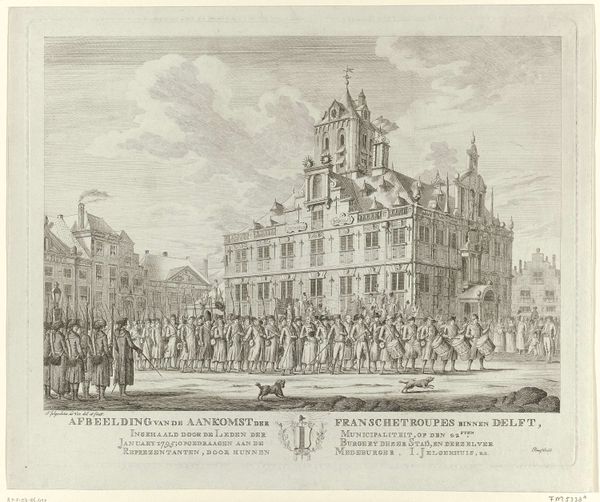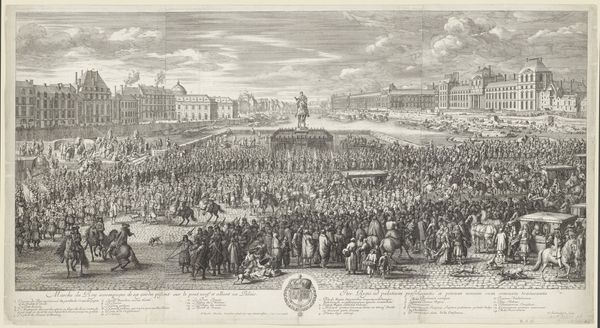
Popular Celebrations in Dam Square, Amsterdam, on 4 March 1795, marking the erection of the Liberty Tree and the success of the Batavian Revolution 1795
0:00
0:00
Dimensions: sheet: 15 7/16 x 21 3/4 in. (39.2 x 55.2 cm)
Copyright: Public Domain
Curator: Immediately, I feel this overwhelming sense of controlled chaos. A sea of people, yet everything seems meticulously arranged, almost theatrical. Editor: Indeed. Here we have Daniël Johannes Torman Kerkhoff’s print, made in 1795. The piece, now housed at the Metropolitan Museum, is titled “Popular Celebrations in Dam Square, Amsterdam, on 4 March 1795, marking the erection of the Liberty Tree and the success of the Batavian Revolution." It is a wonderfully detailed engraving, etching and drawing all in one. Curator: Etching and engraving… gives it this rigid structure, a sense of order even within the revelry. Notice the precise lines, the detailed architecture. It’s like looking at a historical document disguised as a street party. The figures are placed in relationship to one another creating diagonal planes which ascend towards the buildings behind them. The image itself operates on two layers; firstly, the throng of the people, and then above, the ordered buildings with rigid vertical and horizontal support systems. Editor: Right? Like they’re *performing* revolution. But look closer at the crowd. I think the artist does a pretty stellar job of rendering emotion within this self-imposed sense of order. There's joy, there's relief, a collective exhale. I can almost hear the music, the speeches… smell the… well, probably not smell, given 18th-century Amsterdam, but you get the vibe. Curator: I see what you mean, although the scene's visual lexicon really points toward rationalism. The architecture looms as these totemic signifiers which provide an orderly frame for this chaotic gathering. If we examine how the figures respond to the surrounding geometry, their emotional responses register in alignment with those shapes which ultimately suggest an era defined by rationality and a certain adherence to logical principles. Editor: That’s really interesting. To me it underscores that tension… the feeling of freedom trying to bloom within these imposed structures of society. Look at how the 'Liberty Tree’ punctures that rigidity in the scene. It all comes back to this performance of liberation—these Dutch citizens attempting to define their liberty in a space framed by these buildings and lines, which ultimately cannot constrain this human expression. Curator: Precisely. It reminds me of Foucault’s writings on power and space— Editor: Woah, hey now— Curator: No no, not to get too academic, but it's really this very clear illustration of those concepts: How space dictates and is dictated by its inhabitants, in their behaviours… Editor: Well, I don’t know if I agree about power. More, the moment of possibility –the brief potential for change… it feels wonderfully immediate and energetic here, doesn’t it? Curator: I agree! Although our interpretations might differ slightly, this artwork serves as a beautiful and thought-provoking meditation on historical, social, and spatial dynamics. Editor: Yeah, you might find revolution on the page, even in black and white and very carefully planned, after all!
Comments
No comments
Be the first to comment and join the conversation on the ultimate creative platform.

